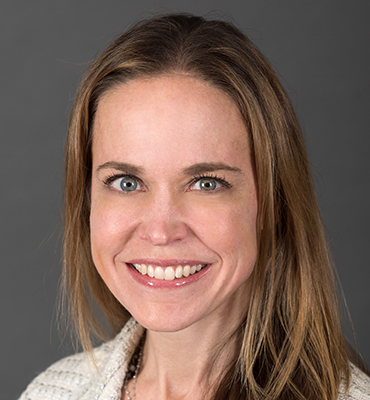Low enrollment stymies completion of rare disease clinical trials

Rare diseases are anything but rare when taken together. In the United States alone, they affect nearly 30 million people. Yet clinical trials for rare diseases are frequently incomplete or go unpublished in the medical literature, finds a study published today in the journal PLOS Medicine.
Analyzing 659 trials, researchers at Boston Children’s Hospital found that over half of rare disease clinical trials were either discontinued or not published four years after their completion. As a result, large numbers of patients with rare diseases were exposed to interventions that did not lead to informative findings.

Low enrollment was the main reason for non-completion and non-publication, says senior investigator Florence Bourgeois, MD, MPH, of the Pediatric Therapeutics and Regulatory Science Initiative at Boston Children’s (pedrx.org), based in the Computational Health Informatics Program (CHIP.org). For that reason, she suggests that clinical trials for rare diseases could benefit from an overhaul in design.
“The biggest barrier appears to be enrolling sufficient patients in individual trials,” she says. “This study points to the need to have better networks and infrastructure in place for rare disease trials. And, it highlights the need for novel approaches in how we conduct trials, and innovation in the methods we use to study these conditions.”
One-third of studies discontinued
Bourgeois and her collaborators tracked 659 randomized, rare disease trials registered on ClinicalTrials.gov from January 2010 to December 31, 2014. Of these, 79 were pediatric trials while the remainder included primarily adults. The researchers searched all trial entries in ClinicalTrials.gov, as well as publications in Medline, EMBASE, and GoogleScholar for study results. When no publication could be found, they contacted study investigators and sponsors directly.
This study points to the need to have better networks and infrastructure in place for rare disease trials.
In the analysis, 199 trials (30 percent) were discontinued, primarily related to difficulties enrolling sufficient numbers of patients. Of trials that were completed, results from 66.5 percent remained unpublished two years later. Four years after completion, 31.5 percent still remained unpublished.
“Our findings show two-thirds of the completed studies were unpublished at two years, which is a common metric for publication,” says Bourgeois. “We extended the follow-up window to four years to capture as many trials as possible, but still, the non-publication rate was higher than expected, as was the discontinuation rate.”
Additional findings:
- The 199 discontinued trials had enrolled 6,349 patients.
- Of the 79 pediatric trials in the investigation, 24 (30 percent) were discontinued. These trials had enrolled a total of 354 children.
- Overall, almost 11,800 patients were enrolled in trials that were completed but were not published after four years.
Setting rare disease trials up for success
Bourgeois points to the need for better planning during the clinical trial design phase to more accurately account for low projected patient populations. “Trial enrollment goals need to be carefully considered and realistic to ensure that the trial is powered to detect important endpoints,” she says. “If small enrollment numbers are appropriately anticipated, the endpoints and analyses can be potentially adjusted, or alternate trial designs and study approaches can be considered.”
However a trial is designed, Bourgeois cautions that whenever working with a small patient population, such as in rare diseases, it is important to think about participation in a patient-centric way.
“Historically, patient trial enrollment has been driven by individual sponsors and companies who are trying to enroll from the same limited pool of patients,” she says. “That is not patient-centric.”
Instead, consideration should be given to ensure that patients who choose to participate in a trial are in one that is most likely to result in new treatments or to otherwise advance the field. Bourgeois proposes strengthening global initiatives and networks to design trials and coordinate recruitment efforts. This would involve proactively collaborating with rare disease experts and patient advocacy groups.
The increase in patient advocacy groups and other disease-focused nonprofits offers a potential solution in bringing these patients together.
“Right now, it is difficult for a patient to always know the options, and it is very difficult to know which trial might be most promising,” Bourgeois says. “So it is important to have greater transparency around the clinical trial landscape for a specific condition and to support patients and providers in making informed decisions around trial participation.”
Bourgeois is supported by an Innovation in Regulatory Science Award from the Burroughs Wellcome Fund and by the Harvard-MIT Center for Regulatory Science.
Chris Rees from Boston Children’s Hospital is first author of the paper. Co-authors are Natalie Pica of Children’s National Medical Center, and Michael Monuteaux of Boston Children’s.
Read more stories about rare disease.
Related Posts :
-

Thanks to Carter and his family, people are talking about spastic paraplegia
Nine-year-old Carter may be the most devoted — and popular — sports fan in his Connecticut town. “He loves all sports,” ...
-

Genomic sequencing transforms a life: Asa’s story
Asa Cibelli feels like he’s been reborn. The straight-A middle schooler plays basketball and football, does jiu jitsu, is ...
-

Phenylketonuria: Giving treatment a second chance
Phenylketonuria (PKU) was once a common cause of intellectual disability. Children born with this metabolic condition lack phenylalanine hydroxylase (PAH), ...
-

AI-enabled medical devices are burgeoning, but many haven’t been tested in children
Medical devices that incorporate artificial intelligence and machine learning are proliferating. In 2013, the FDA approved fewer than 10 such devices; by 2023, ...





